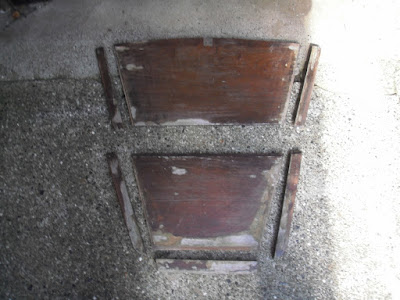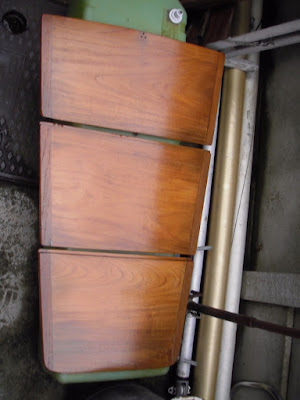Cracks on port bow
After a bit of prodding it turned out that there was some delamination in this area or probably more to the point it was not properly laminated in the first place as the gelcoat was easily pried away along with the chopped strand mat immediately behind it most of which showed a distinct lack of resin perhaps this part of the operation was reached on a Friday afternoon anyway I carried on removing the stuff until I got back to good solid laminate.
Extent of the problem
I then chamfered down the edges of the area and removed all the suspect chopped strand mat, gave the whole area a good sanding then cleaned everything up with acetone ready to start laying up some new glass cloth and epoxy resin. I was going to use paper templates and then pre cut the glass cloth to size but in the end I cut the cloth a bit over size and once the epoxy had cured just trimmed off the excess and sanded along the edge.
Close of play today
I used some offcuts of 4mm ply left over from the headlining panels to produce some templates from the starboard bow as particularly on the sharp edge at the top of the flair requires quite a lot of building up. This sharp edge in my humble opinion is a poor design feature as there was a small void where the chopped strand mat met the inside of the edge this was exacerbated by the shortage of resin in this area. From the photograph there is still some more glass work required at the upper edge of the flair the blue painted area is glassed up to the required level but will require some filling and fairing to give a decent finish the aim is to get the rest of the new glass laid up on Monday as I will be away for the rest of the week.
I also finished the aft cabin washboards this week on the face of it there doesn't seem to be a great deal of progress made but the glass fibre work seemed to be progressing slowly but I did have to take some time out to procure additional materials but that's the nature of these projects sometimes they go forward in leaps and bounds and at other times progress seems painfully slow.
Aft cabin washboards back in place






















